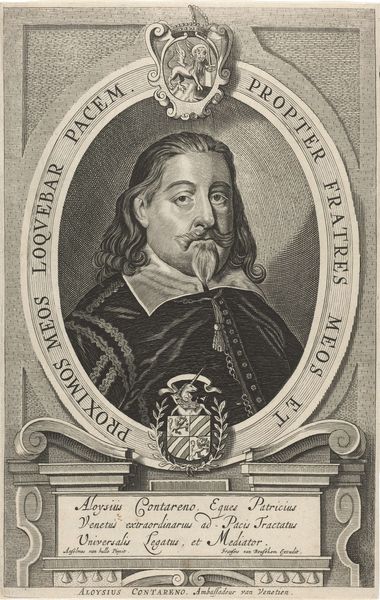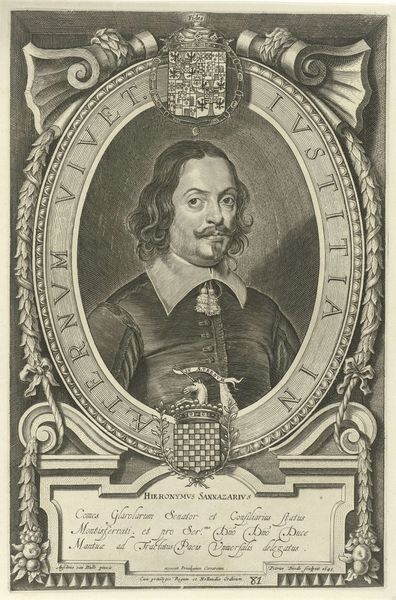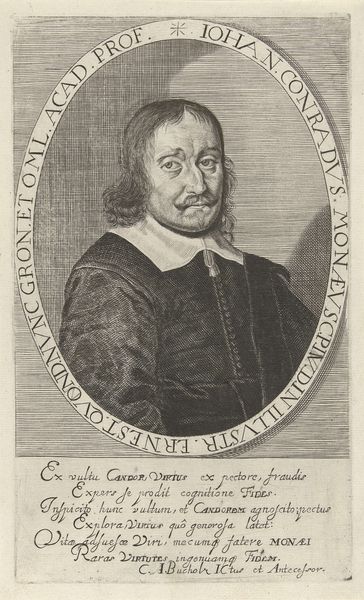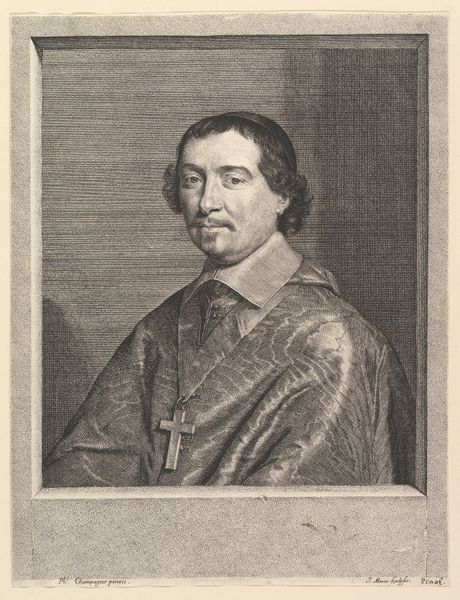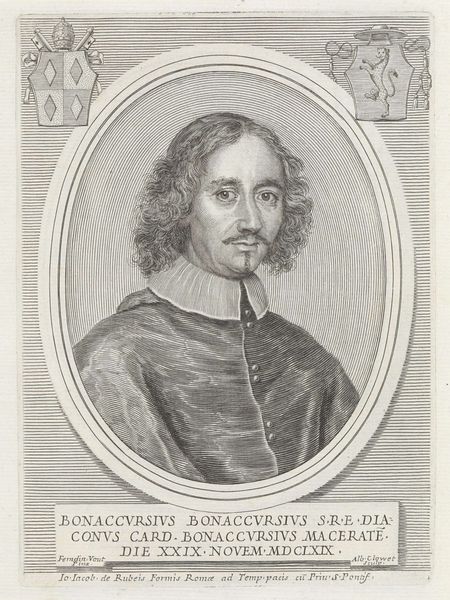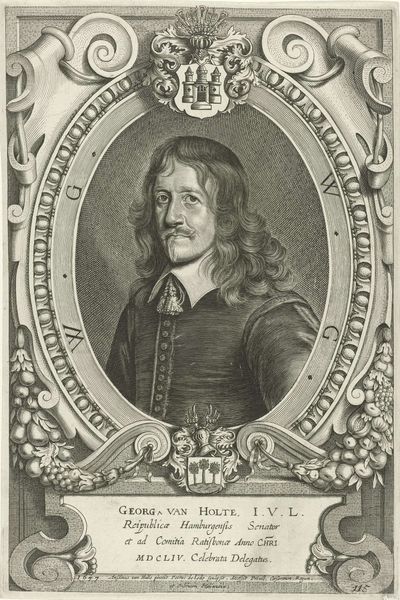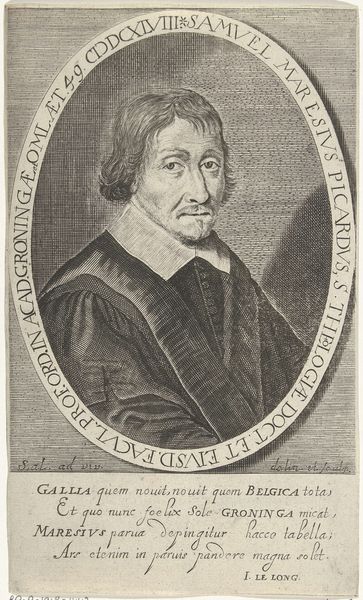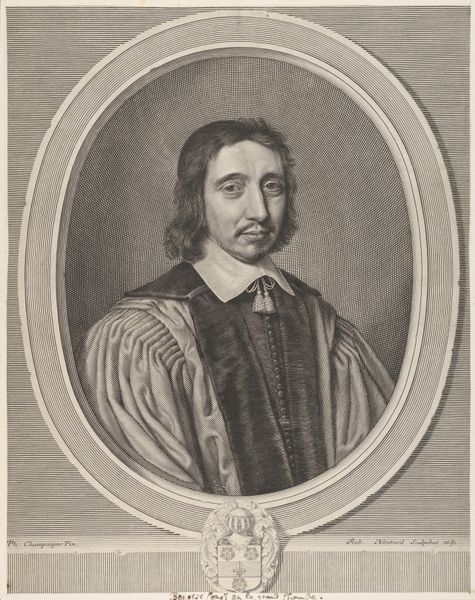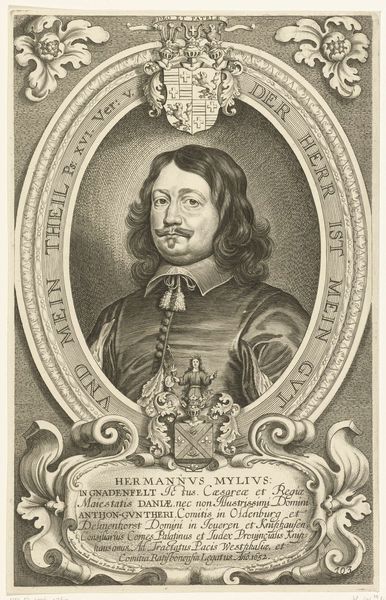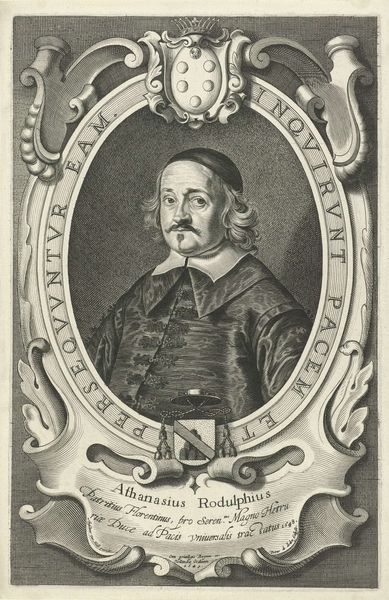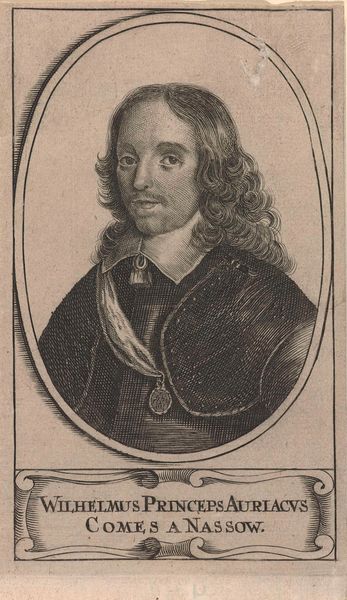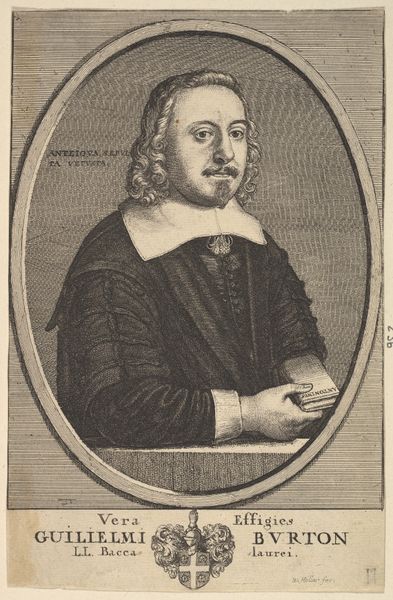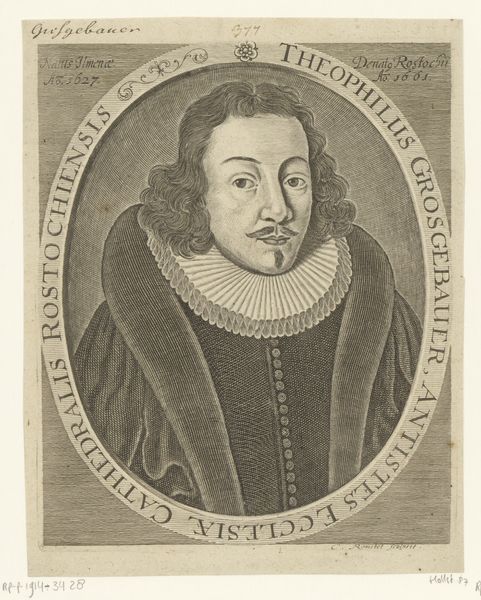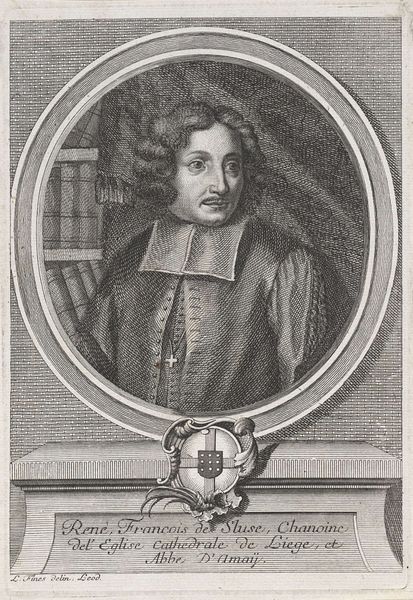
carving, metal, engraving
#
portrait
#
carving
#
baroque
#
portrait image
#
metal
#
old engraving style
#
caricature
#
engraving
Dimensions: height 143 mm, width 116 mm
Copyright: Rijks Museum: Open Domain
Curator: This is a portrait of Giovanni Francesco Raimondi. It’s an engraving, dating probably somewhere between 1654 and 1679 and crafted by Albertus Clouwet. Editor: It’s striking how the detail gives it almost a photographic quality, despite being an engraving. There's a somber feel; his expression seems serious, almost melancholy. Curator: The piece situates itself within a tradition of portraiture aimed at immortalizing notable figures. Raimondi, whose age is indicated as fifty in the inscription, held a position of some standing within his community, a role that Clouwet immortalized through meticulous detail and skillful use of line. Editor: Yes, the linear detail—it's incredibly precise! The texture in the hair, the shading around the eyes, the subtle folds in his clothing—it's quite compelling. There is so much labor visible here that creates a striking image of power. Do you see that cross above the text, and what appears to be coat-of-arms in each top corner? Those details denote rank in ways that suggest we must interrogate not only what this work of art appears to signify at face value but also, the undergirding it relies upon in terms of material and cultural power. Curator: The coats of arms likely connect to Raimondi’s lineage or affiliation, solidifying his societal standing through established symbols. The baroque love for the grand, but the somberness may come from its function, marking legacy, perhaps even after someone passed. These are pieces often intended for the gaze of those already in the in-group. Editor: So, in thinking about who this artwork represents, and who it likely represents to, are there interventions that contemporary practitioners could initiate today, using these archives of symbolic authority? What alternative visions or narratives could disrupt this canon? Curator: The art world continuously grapples with these historical representations. Through exhibiting these pieces, juxtaposing them with contemporary art, museums invite conversations, not just about the art itself, but the narrative and legacies it reflects. We encourage questions regarding class, social mobility, political history. Editor: It invites viewers to contemplate who is missing from this visual archive and to understand the nuanced dance between historical record, artistic expression, and the ongoing struggle for representational justice. Curator: Precisely, a reflection on how imagery and art participates in historical construction, memory, and identity.
Comments
No comments
Be the first to comment and join the conversation on the ultimate creative platform.
